The 5 Best Exercises for Patellar Tendonitis
Are struggling to get rid of your pain?
Chances are you’re doing the wrong exercises or you’re making small technique mistakes that are hurting your knees.
On this page, I share the 5 patellar tendonitis exercises that thousands of my readers have already benefited from.
Before continuing, read the full disclaimer here.
The 5 Best Patellar Tendonitis Exercises
Early patellar tendonitis can be treated very well with resting. However, once the injury has progressed to the more chronic stage, you could even have pain when sitting.
To get rid of patellar tendon pain through exercise you need to take the following steps:
- Get rid of muscle tension that is contributing to tendon overload
- Work on other biomechanical issues that may cause tendon overload
- Strengthen the tendon safely
Here are the most effective exercises to do that.
Reducing Tendon Pain Without Stretching
The best way to reduce pain from an overused patellar tendon is to release as much tension as possible from your leg muscles.
Stretching may be the first thing on your mind in that regard, but for maximum effect, you need to combine stretching with self-massage of your leg muscles.
Self-massage reduces tension in your legs by releasing soft-tissue restrictions in your muscles and it can be very uncomfortable.
These restrictions happen when tissues that should glide freely on top of each other are stuck together.
Sometimes this happens after an injury, but often it’s a consequence of too much sitting and general lack of movement.
For many of my readers, self-massage of the quadriceps muscles led to an instant reduction in pain.
It’s like when your stomach hurts after eating too much and the first thing you do is undo your belt buckle: instant relief!
Self-Massage for Patellar Tendonitis
To do self-massage, you will need a foam roller or another round object you can roll on (e.g., a PVC pipe or a tennis ball).
Place the roller underneath your legs and begin by rolling your calves, your hamstrings, your buttocks (the gluteal muscles), and the sides of your hip.
Here’s an overview of the muscles you need to massage:
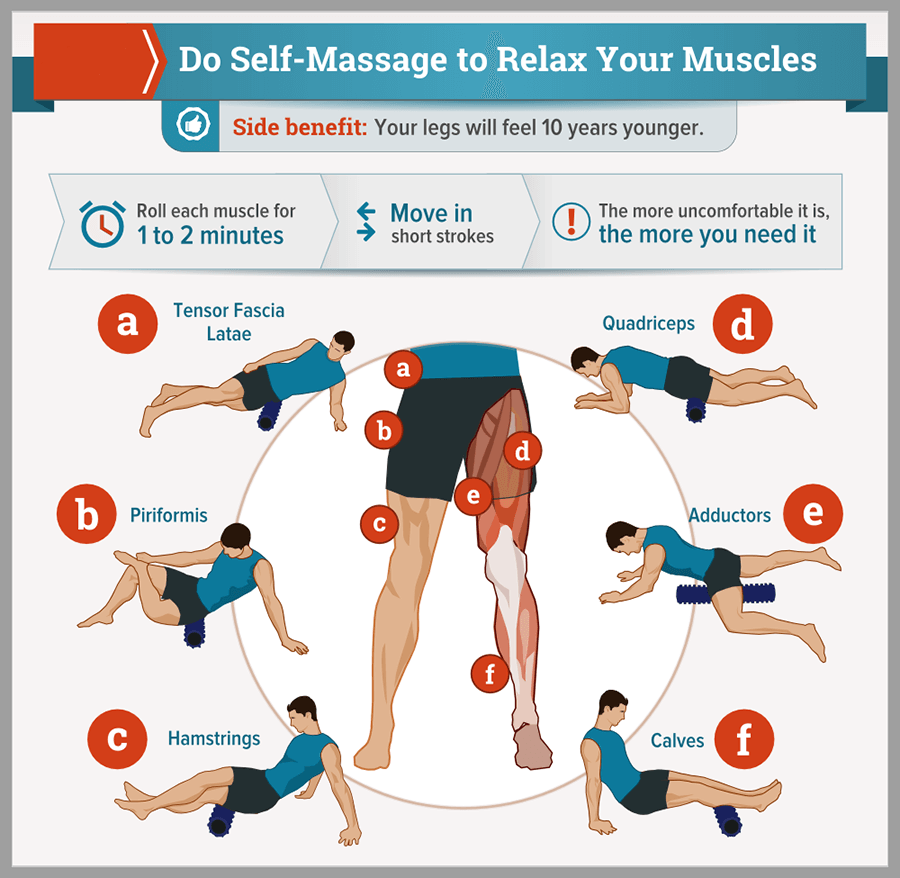
If you don’t have a foam-roller you can roll your quad muscles with a broom stick, a curtain pole, or something similar. Just roll the muscle as if you were rolling out dough.
Stretching Exercises for Patellar Tendonitis
In patellar tendonitis, three muscle groups commonly tend to be tight: the calves, the hamstrings, and the quadriceps muscles. These muscle cross the knee, so any excess tightness in these muscles places more tension on the knee.

If you’re running and jumping with tight leg muscles, your legs are working against additional resistance and pain eventually develops. It’s like driving with your handbrake on: instead of breaking records, you’ll break your body.
To learn more about the stretches you can watch the video below or read the full article about patellar tendonitis stretches.
Patellar Tendonitis Exercises for the Hips
To understand why training your hip muscles is important for healing your patellar tendonitis remember this analogy: if you lift with good back alignment, it’s much easier on your spine than if you were to lift with a rounded back.
For good leg alignment, your feet need to point forward and your knees should track over your toes when you move. Don’t let your knees cave in towards the midline of your body and don’t let your knees come forward when you jump or squat.
The following gluteal exercises will help you maintain good leg alignment and thereby help take stress off your patellar tendon. Do 3 sets of 10 to 15 repetitions of each exercise:
Gluteal Exercise #1: Hip Abductions
Lie on your side with your body in a straight line. Now, raise the upper leg up by leading with the heel. Keep your hips perpendicular to the ground and never move your hip. You should feel the exertion on the outside of your hip and not your thigh.
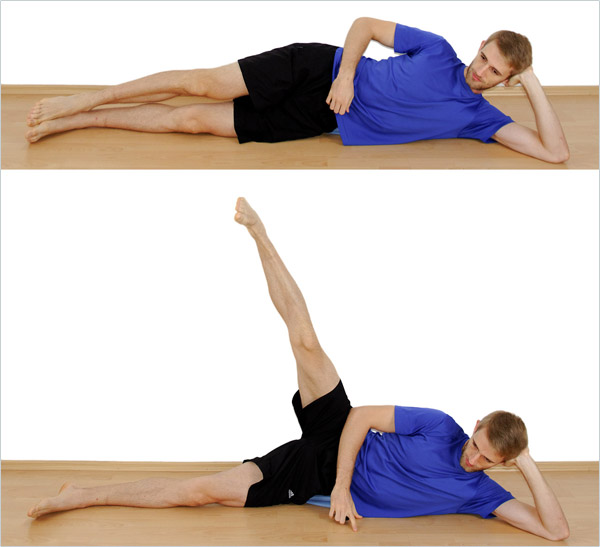
Gluteal Exercise #2: Clamshells
Lie on your side with your legs slightly bent and in front of you. Rotate the upper leg out, merely using your hip muscles. Don’t push off with your feet and don’t move your hip.
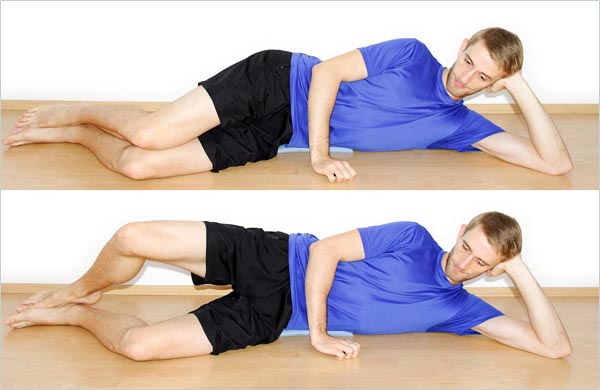
Gluteal Exercise #3: Glute Bridges
Lie on your back and move your heels in so that your middle fingers gently touch your heels. Now, push through your heels to form a straight line from your knees to your shoulders. Touch your buttocks muscles and your hamstrings to make sure your gluteals are doing most of the work.
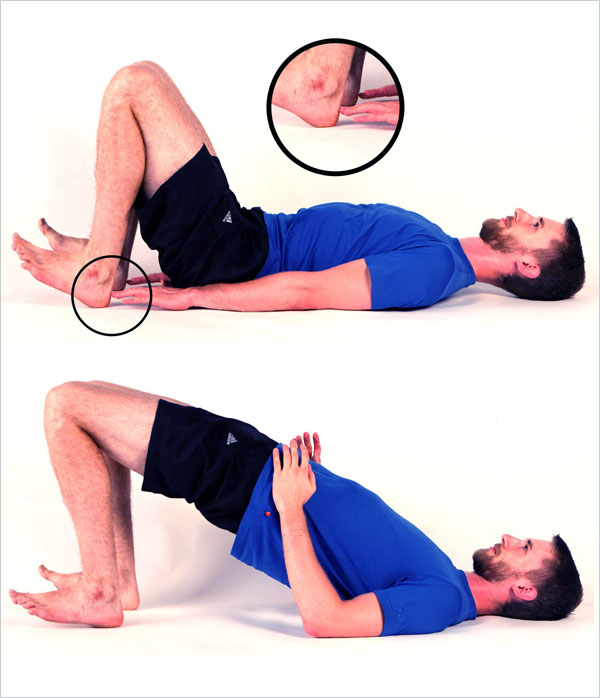
Tendon Strengthening Exercises
There are two types of tendon strengthening exercises you can choose from: isometric exercises and isotonic exercises.
Isometric exercises are a great choice for tendons that are still easily irritated. Isometrics can reduce pain and muscular inhibition.
You can do isometric patellar tendonitis exercises by holding weight in place instead of moving it. A wall sit is a great example:
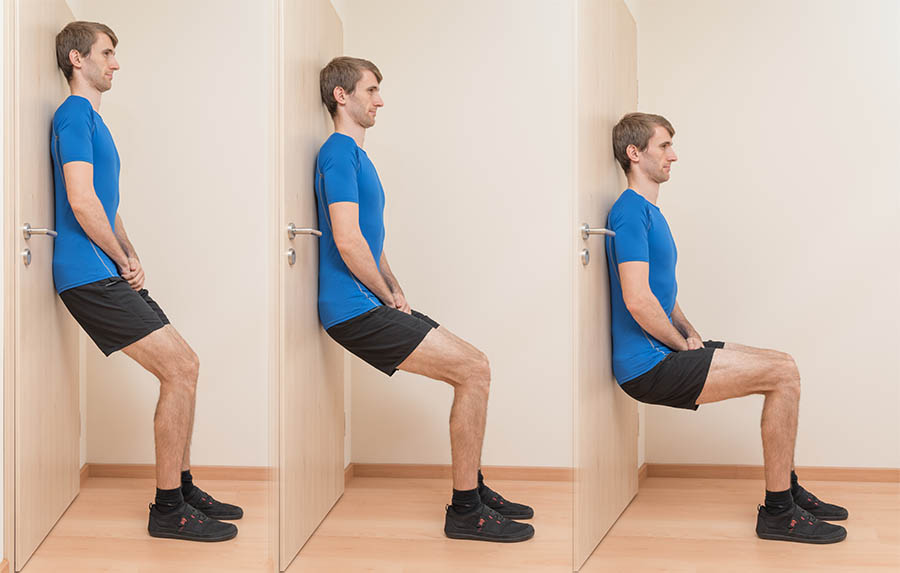
A lesser known isometric exercise for patellar tendonitis is the Spanish Squat:
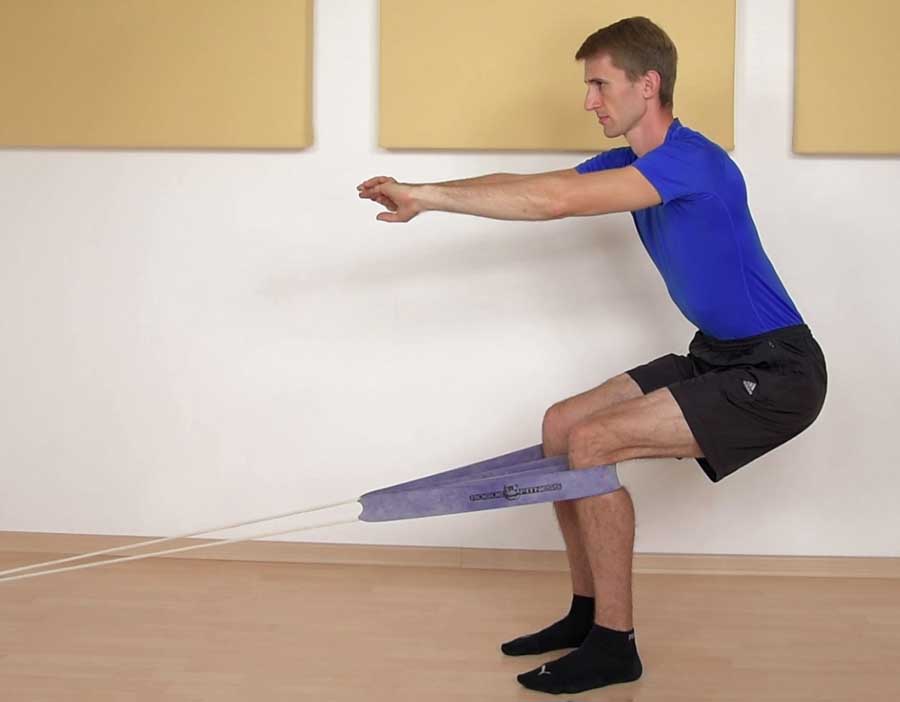
Isotonic exercises are a good choice once pain has stabilized at a lower level.
You can do slow squats, slow leg presses, slow leg extensions, as well as any other quad-focused exercise as long as it’s possible to do it slowly.
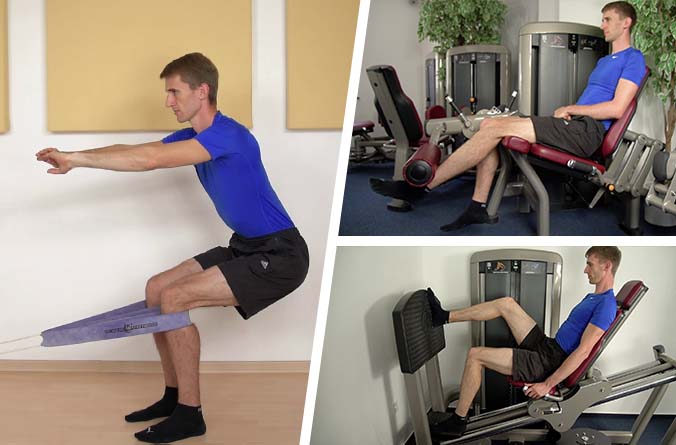
Take 3 – 5 seconds for the lowering part of the movement and 3 – 5 seconds for pushing up again. Avoid bouncing and momentum.
The Best Way to Start
It’s easy to waste months going in circles because there’s so much conflicting advice on patellar tendonitis.
If you feel like you’re not making enough progress, let me help you. Join my free course about patellar tendonitis and we can get started right away:
